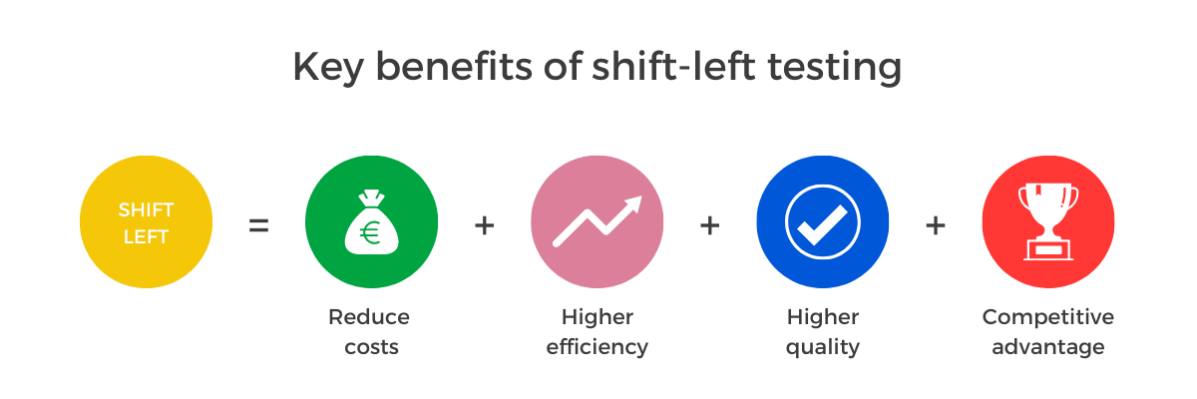Effective quality assurance: the power of test coordination and management with a shift-left approach
In the fast-paced world of software development, effective test coordination and management are critical to success. As more organizations adopt agile methodologies, it becomes more important to implement best practices in leading test teams. In addition, you need to implement testing strategies that align with how your development teams work.
Shift-left testing: the key to agile testing success
To help organizations achieve success in testing, The Bright Academy developed a new training program that focuses specifically on test coordination and management. We use our own test maturity model as a framework to guide participants through all important topics and best practices. All of this with a strong emphasis on the concept of shift-left testing.

When moving testing activities ‘left’ (earlier) in the development process, issues are identified and resolved before they can cause more significant problems. This approach also helps to reduce the time and cost associated with the development process. You can catch issues before they become more difficult and expensive to resolve. So, you get a more efficient and cost-effective testing process that delivers high-quality software products.
It’s important to note that ‘shift-left’ testing doesn’t necessarily mean that all testing should be automated or executed at the unit, integration testing level. While test automation can certainly be an effective way to catch issues earlier in the process, we recognize that not all testing can or should be automated. Instead, our training focuses on identifying the most effective types of testing for each stage of the development process. And on top of that developing a comprehensive testing plan that includes both automated and manual testing.
Mastering testing strategies and approaches with practical exercises
Our training is designed to be interactive, the participants gain hands-on experience. Through practical exercises on each topic of our ‘test maturity model’, we try to reinforce learning and help them apply what they have learned in real-world scenarios. We explain experience-based best practices and highlight what works and what doesn’t in certain circumstances.
One of the key areas covered in the training is how to plan and coordinate testing efforts effectively. Firstly, this involves developing a comprehensive testing plan that considers the specific needs and requirements of the project. Secondly, identifying the most effective types of testing for each stage of the development process, and lastly allocating resources and time accordingly.
Another critical aspect is ensuring that testing activities align with business goals. You can do this by managing project timelines, and prioritize the testing activities according to scope, requirements, timing, budget, … Participants learn how to develop a testing strategy that supports the overall business objectives of the organization. Ensuring that testing efforts are focused on delivering high-quality software products that meet the needs of the end-users.
Effective communication with stakeholders is also crucial to the success of testing efforts and strategies. Participants in our training program learn how, what and when to communicate with various stakeholders.
Agile versus more traditional approaches
We understand that not all organizations operate solely within an agile framework. So, our training also includes test coordination and management within more traditional approaches.
Participants gain a better understanding of the strengths and weaknesses of each approach by comparing these different methodologies. Besides that they learn how to apply best practices in all situations. This also helps participants to develop a well-rounded understanding of testing practices across different methodologies and departments in transition to an agile way of working. This is essential in today’s fast-paced and constantly evolving software development industry, where flexibility and adaptability are essential for success.
We enable participants to choose the best approach for their specific project. And we ensure that they are equipped with the knowledge and skills to effectively plan, coordinate, and manage testing efforts, regardless of the methodology being used.
Efficient and cost-effective testing approaches
By implementing a flavor of the shift-left testing approach tailored to test projects and development environments, organizations identify and address problems early in the development process. This leads to more efficient and cost-effective testing processes. Such an approach helps reduce the likelihood of defects and costly rework. Which ensures that software products meet the highest quality standards while reducing the time and cost associated with the development process.
Test leads who can effectively coordinate and manage testing projects and teams are critical to success in software development. Regardless of the methodology used. Our new training program equips participants with the knowledge and skills needed to apply best practices. Both in effectively leading test teams and test strategies. They will unlock their full potential.
Explore our training calendar today!
We invite you to check out our training calendar, here.
You can always reach out to us to learn more about our training offerings and how they can be customized to meet the specific needs of your team!
